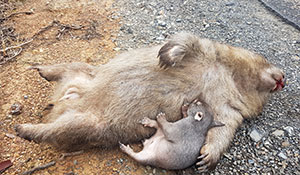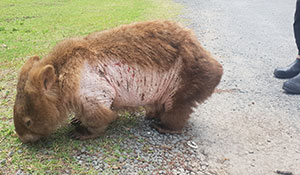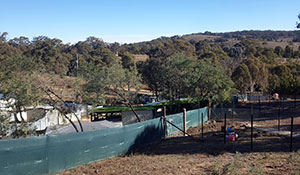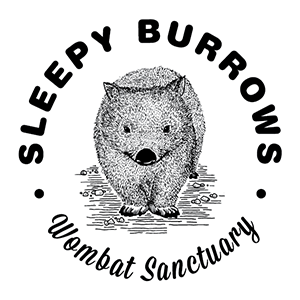Services
We Serve Wombats and the Community
At the sanctuary, we are passionate about wombat welfare and community engagement. After all, a lot of furry creatures (wombats) depend on us for their survival. The work we do at Sleepy Burrows is varied – from nursing injured wombats to educating the broader public. An overview of the services we provide is outlined below.
Treatment of injured wombats
Sleepy Burrows treats and rehabilitates wombats that have suffered serious physical injuries. Many of these injuries are sustained in motor vehicle collisions. Sadly, some injuries are caused by acts of animal cruelty.
Adoption of orphaned wombat babies (joeys and pinkies)
It’s not unusual for a female wombat killed by a motor vehicle to have a joey (pinkie) in its pouch. If the joey is still alive, Sleepy Burrows begins the long process (usually 2-3 years) of nurturing and training the joey to survive on its own, with all the relevant bush skills necessary.

Treatment of wombats with mange
Many wombats in the wild are infected with mange – a deadly skin disease caused by the parasitic mite (Sarcoptes scabiei). Depending on the severity of the mange, treatment times and outcomes vary for the wombats, in the best interest of the wombats themselves.

Rehabilitation of orphaned pet wombats
Despite their cute, cuddly appearance, wombats are wild animals and it is illegal to keep a wombat as a pet. Sleepy Burrows puts considerable time and effort into rehabilitating “orphaned” pet wombats – a process that can take several years. Without the proper training, an “orphaned” pet wombat can’t survive in the wild.

Working with the community
Sleepy Burrows frequently assists the public with education and information We work with farmers and landowners to solve wombat problems, creating co-existence, provide information sessions to school children about the species, and teach classes to university students concerned wtih a variety of wildlife issues and how best to navigate their future in assisting the fast changing environment for wildlife.
